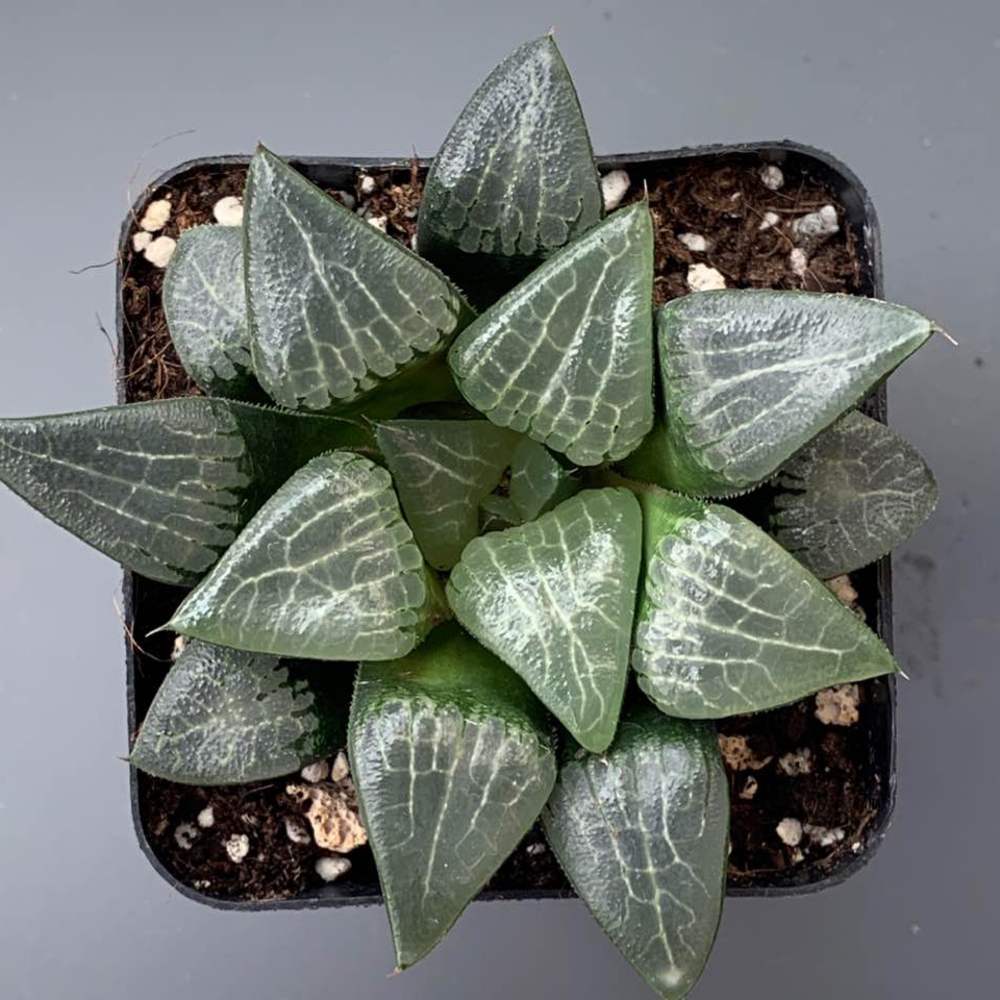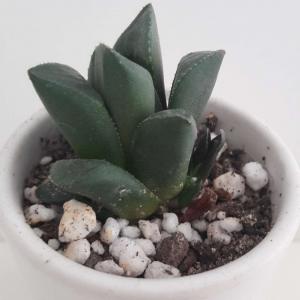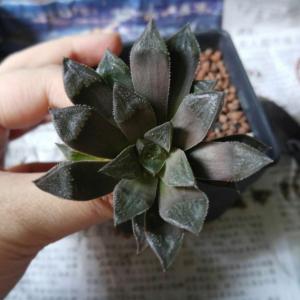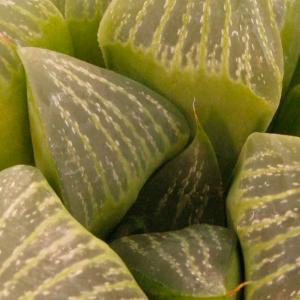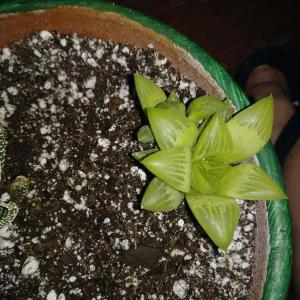植物经验
详细说明
Haworthia retusa is a small, rosette forming succulent perennial, up to 4 inches (10 cm) tall. The leaves are very thick, triangular, translucent, green in color, up to 3.1 inch (8 cm) long and up to 0.8 inch (2 cm) wide. Flowers are small, tubular and white in color, in racemes up to 20 inches (50 cm) tall, in late spring to summer.
Growing Conditions
Light: Bright light, but not direct sunlight. These grow in similar conditions to other succulents. White or yellow leaves usually signify too much sun.
Water: Water evenly and generously in the summer, letting the soil media dry out between watering. In the winter, reduce watering to every other month. Never allow water to collect in the rosette.
Temperature: Warmer summers but cool in the winter (down to 50˚F/10˚C).
Soil: Use a cactus mix or very fast-draining potting soil mixed with sand.
Fertilizer: Fertilize during the summer growing season with a cactus fertilizer. Don’t feed during the winter.
Propagation
Haworthia can be propagated at repotting time using offsets from the mother plant. When taking offsets, use a sharp knife or snippers and cut as close to the mother stem as possible to including as many roots as possible, then allow the offset to dry briefly before repotting it (similar to cuttings from other succulents).
Pot the offsets in a small pot, using the same soil as the mother plant, put it a warm, bright spot, and make sure to adequately water.
Repotting
Haworthia are small (usually remaining between 3 inches (7.5 cm) and 5 (12.5 cm) inches in height) and relatively slow-growing. They are often grown in small clusters in wide, shallow dishes. Over time, clusters will naturally enlarge as the mother plant sends off small plantlets. When the cluster has outgrown its dish, repot in the spring or early summer into a new wide and shallow dish with fresh potting soil. This is also the time to take offsets for propagation.
Grower’s Tips
Haworthia are not considered difficult houseplants to grow—if you can keep a pot of aloe alive on a windowsill, chances are you can do the same with a dish of Haworthia. As with all succulents, the most dangerous situation is too much water—they should never be allowed to sit in water under any circumstances. At the same time, these decorative little plants can be grown in interesting containers such as tea cups and even miniature baby shoes. If you’re given a Haworthia in such a container, make sure the container had adequate drainage. If it doesn’t, it might be a good idea to pop the plant out of its container and add a layer of gravel to the bottom to reduce the wicking action of the soil above. Finally, look out for sunburned spots on your plants.
Growing Conditions
Light: Bright light, but not direct sunlight. These grow in similar conditions to other succulents. White or yellow leaves usually signify too much sun.
Water: Water evenly and generously in the summer, letting the soil media dry out between watering. In the winter, reduce watering to every other month. Never allow water to collect in the rosette.
Temperature: Warmer summers but cool in the winter (down to 50˚F/10˚C).
Soil: Use a cactus mix or very fast-draining potting soil mixed with sand.
Fertilizer: Fertilize during the summer growing season with a cactus fertilizer. Don’t feed during the winter.
Propagation
Haworthia can be propagated at repotting time using offsets from the mother plant. When taking offsets, use a sharp knife or snippers and cut as close to the mother stem as possible to including as many roots as possible, then allow the offset to dry briefly before repotting it (similar to cuttings from other succulents).
Pot the offsets in a small pot, using the same soil as the mother plant, put it a warm, bright spot, and make sure to adequately water.
Repotting
Haworthia are small (usually remaining between 3 inches (7.5 cm) and 5 (12.5 cm) inches in height) and relatively slow-growing. They are often grown in small clusters in wide, shallow dishes. Over time, clusters will naturally enlarge as the mother plant sends off small plantlets. When the cluster has outgrown its dish, repot in the spring or early summer into a new wide and shallow dish with fresh potting soil. This is also the time to take offsets for propagation.
Grower’s Tips
Haworthia are not considered difficult houseplants to grow—if you can keep a pot of aloe alive on a windowsill, chances are you can do the same with a dish of Haworthia. As with all succulents, the most dangerous situation is too much water—they should never be allowed to sit in water under any circumstances. At the same time, these decorative little plants can be grown in interesting containers such as tea cups and even miniature baby shoes. If you’re given a Haworthia in such a container, make sure the container had adequate drainage. If it doesn’t, it might be a good idea to pop the plant out of its container and add a layer of gravel to the bottom to reduce the wicking action of the soil above. Finally, look out for sunburned spots on your plants.
花相册 (4)
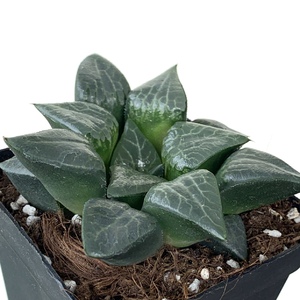
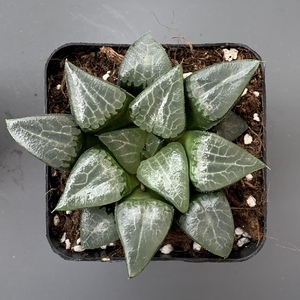
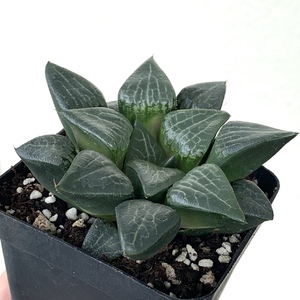
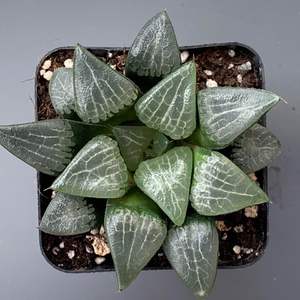
kensong
2019年06月08日

Bought one for Mary from AugustFame RM23




kensong
2019年06月08日

This is my first growing diary. From AugustFame RM23




相关用户


